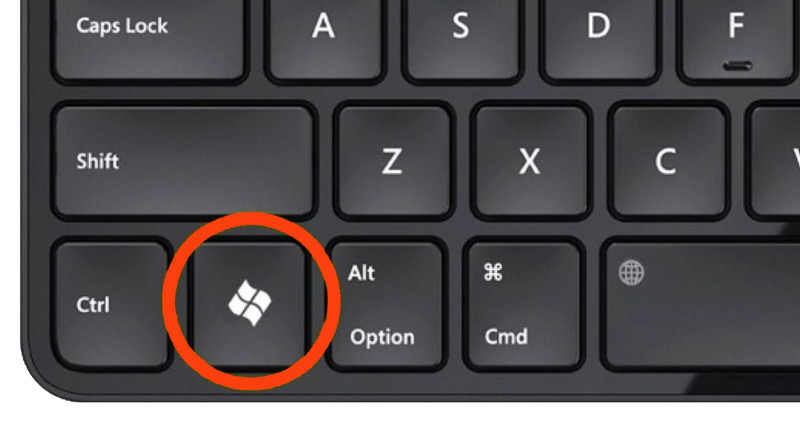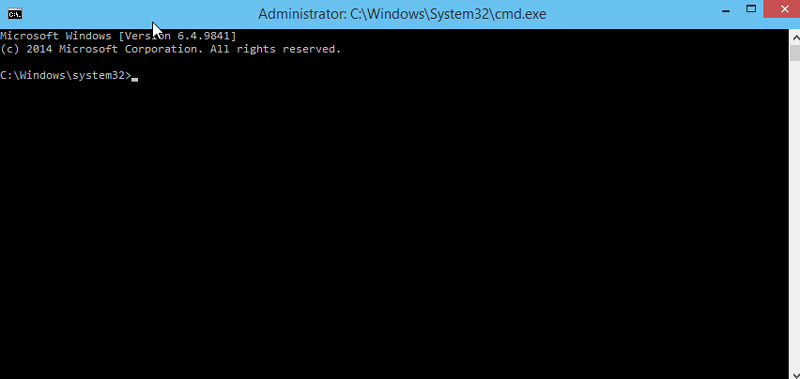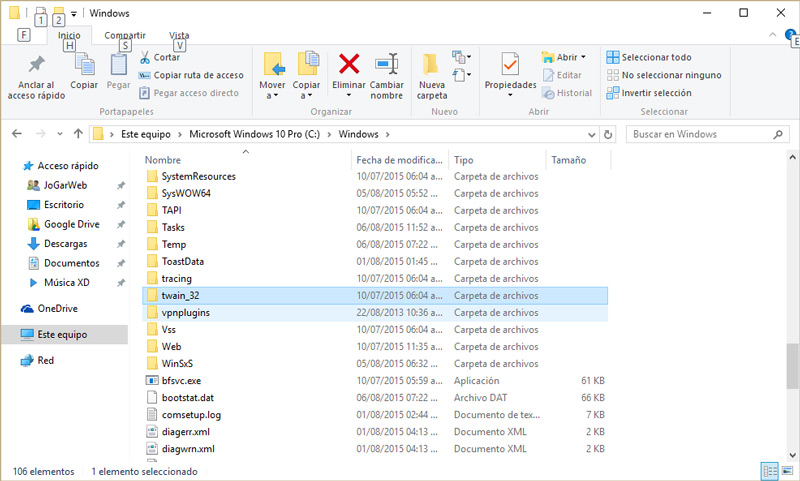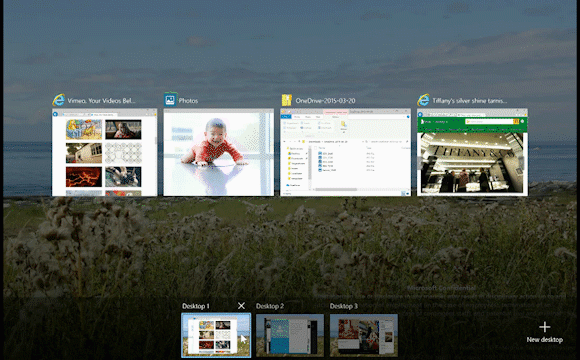
Index:
UPDATED ✅ Do you want to know the keyboard shortcuts in Windows 10? ⭐ ENTER HERE ⭐ And discover the most complete list of shortcuts
Without a doubt, the latest (to date) of Microsoft’s operating systems, W10, is the most used by all users loyal to the products of this brand, finally surpassing windows 7 that for many years took market share as the OS of personal computers.
Although it is true, each new Operating System brings with it an infinity of new surprises and tools, counting on the fact that we have less and less time, it is undoubtedly an advantage to have certain basic knowledge in the management of our PC, in this case, using only the computer keyboard, pressing their keys in combination to open, close, copy and a long etcetera of useful actions and above all, fast to save us that time that we value so much.
We are going to show you an extensive but useful list of those key combinations that we can use to navigate and use our computer much faster using only our keyboardthere are countless combinations or gestures, here we bring you those that can be most useful on a day-to-day basis, if for some reason you forget any of these keyboard shortcutsdo not hesitate to visit this post again and have it as a reference, since we will update the content so that it is always up to date.
Complete list of gestures, commands and keyboard shortcuts to use in Windows 10
We present the most complete and up-to-date list of key combinations to control all the controls and accesses on your computer with Windows 10 operating systema list categorized by actions to make it easier and more useful for you to reach the keyboard shortcut or gesture that interests you the most, Here we go with the W10 shortcodes!
Key combination to copy, cut and paste in Windows 10

| key combination | Action |
|---|---|
| Ctrl + X | Cut the selected element. |
| Ctrl + C (or Ctrl + Insert) | Copy the selected item. |
| Ctrl + V (or Shift + Insert) | Paste the selected item. |
| Ctrl + Z | Undo an action. |
| Alt + Tab | Switch between open applications. |
| Alt + F4 | Close the active item or exit the active application. |
| Key + L | Lock down the computer. |
| Key + D | Show and hide the desktop. |
| F2 | Change the name of the selected item. |
| F3 | Find a file or folder in File Explorer. |
| F4 | Show address bar list in File Explorer. |
| F5 | Update the active window. |
| F6 | Scroll through items on the screen in a window or on the desktop. |
| F10 | Activate the menu bar in the active application. |
| Alt + F8 | Show password on login screen. |
| Alt + Esc | Cycle through items in the order they were opened. |
| Alt + underlined letter | Execute the command corresponding to that letter. |
| Alt + Enter | View the properties of the selected item. |
| Alt + Spacebar | Open the context menu of the active window. |
| Alt + Left Arrow | Return. |
| Alt + Right Arrow | Go forward. |
| Alt + Page Up | Go up one screen. |
| Alt + Page Down | Go down a screen. |
| Ctrl + F4 | Close the active document (in applications that are open full screen and allow you to have multiple documents open simultaneously). |
| Ctrl + A | Select all elements in a document or window. |
| Ctrl + D (or Del) | Delete the selected item and move it to the recycle bin. |
| Ctrl+R (or F5) | Update the active window. |
| Ctrl + Y | Redo an action. |
| Ctrl + Right Arrow | Move the cursor to the beginning of the next word. |
| Ctrl + Left Arrow | Move the cursor to the beginning of the previous word. |
| Ctrl + Down Arrow | Move the cursor to the beginning of the next paragraph. |
| Ctrl + Up Arrow | Move the cursor to the beginning of the previous paragraph. |
| Ctrl + Alt + Tab | Use the arrow keys to switch between all open applications. |
| Alt + Shift + arrow keys | When a group or tile has focus on the Start menu, move it in the specified direction. |
| Ctrl + Shift + arrow keys | When a window has focus on the Start menu, move it to another window to create a folder. |
| Ctrl + arrow keys | Change the size of the Start menu when it opens. |
| Ctrl + arrow key (to move to an item) + Space bar | Select multiple individual items in a window or on the desktop. |
| Ctrl + Shift with an arrow key | Select a block of text. |
| Ctrl + Esc | Open Home. |
| Ctrl + Shift + Esc | Open Task Manager. |
| Ctrl + Shift | Change the keyboard layout when multiple keyboard layouts are available. |
| Ctrl + Space bar | Turn the Chinese Input Method Editor (IME) on or off. |
| Shift+F10 | Show the context menu of the selected item. |
| Shift with an arrow key | Select multiple items in a window or on the desktop, or select text in a document. |
| Shift + Delete | Delete the selected item without moving it to the recycle bin. |
| right arrow | Open the next menu to the right or open a submenu. |
| Left arrow | Open the next menu on the left or close a submenu. |
| esc | Stop the current task or exit it. |
| Print Screen | Take a screenshot of the full screen and copy it to the Clipboard.
*Note: You can change this shortcut to also open the screen clipping, which allows you to edit your screenshot.
Choose Start > Setting > Accessibility > Keyboard and turn on the toggle button below Direct access to print screen. |
*If you are viewing the website from your smartphone, slide the table to the right to see all the data
Keyboard gestures using the Windows Start key

| key combination | Action |
|---|---|
| Key | Open or close Home. |
| Key + to | Open the Action Center. |
| Key + B | Bring focus to the notification area. |
| Key + C | Open Cortana in listening mode.
*Note: This shortcut is off by default
. To activate it, select Start > Setting > Cortana and activate the toggle button on Let Cortana listen to my commands when I press the Key + C. Cortana is available only in certain countries/regions, and some features may not be available in all countries/regions. If Cortana is unavailable or turned off, you can still use search. |
| Key + Shift + C | Open access buttons menu. |
| Key + D | Show and hide the desktop. |
| Key + Alt + D | Show and hide the date and time on the desktop. |
| Key + E | Open File Explorer. |
| Key + F | Open the Feedback Hub and take a screenshot. |
| Key + G | Open the game bar with a game open. |
| Key + H | Start dictation. |
| Key + I | Open Settings. |
| Key +J | Set the focus to a Windows Tip when one is available. When a Windows tip appears, move focus to the tip. Pressing keyboard shortcuts again to bring focus to the element on the screen that Windows Tip is pinned to. |
| Key +K | Open the Connect quick action. |
| Key + L | Lock your computer or switch accounts. |
| Key + M | Minimize all windows. |
| Key + OR | Lock device orientation. |
| Key + P | Choose a presentation mode. |
| Key + Ctrl + Q | Open Quick Assist. |
| Key +R | Open the Run dialog |
| Key + S | Open search. |
| Key + Shift + S | Take a screenshot of part of the screen. |
| Key + T | Scroll through the applications on the taskbar. |
| Key + U | Open the Ease of Access Center. |
| Key + V | Open the Clipboard.
*Note: To activate this shortcut, select Start > Setting > System > Clipboard and turn on the toggle button below clipboard history.
|
| Key + Shift + V | Scroll through notifications. |
| Key +X | Open the Quick Link menu. |
| Key + Y | Switch input between Windows Mixed Reality and the desktop. |
| Key +Z | Show available commands in an app in full screen mode. |
| Key + period (.) or semicolon (;) | Open the emoji panel. |
| Key + comma (,) | Temporarily browse the desktop. |
| Key + pause | Show the System Properties dialog |
| Key + Ctrl + F | Search for computers (on a network). |
| Key + Shift + M | Restore minimized windows to the desktop. |
| Key + number | Open the desktop and launch the application pinned to the taskbar in the position indicated by the number. If the app is already running, switch to that app. |
| Key + Shift + number | Open the desktop and start a new instance of the application pinned to the taskbar in the position indicated by the number. |
| Key + Ctrl + number | Open the desktop and switch to the last active window of the application pinned to the taskbar in the position indicated by the number. |
| Key + Alt + number | Open the desktop and open the list of application shortcuts pinned to the taskbar in the position indicated by the number. |
| Key + Ctrl + Shift + number | Open the desktop and open a new instance of the application located in the given position on the taskbar as an administrator. |
| Key + Tab | Open Task View. |
| Key + up arrow | Maximize the window. |
| Key + down arrow | Remove the current application from the screen or minimize the window to the desktop. |
| Key + left arrow | Maximize the application or desktop window on the left side of the screen. |
| Key + right arrow | Maximize the desktop or application window to the right side of the screen. |
| Key + Home | Minimize everything except the active desktop window (repeat to restore all windows). |
| Key +Shift + Up Arrow | Expand the desktop window to the top and bottom of the screen. |
| Key +Shift+Down Arrow | Restore/minimize active desktop windows vertically while preserving width. |
| Key +Shift+Left or Right Arrow | Move an application or desktop window from one monitor to another. |
| Key +space bar | Switch between input language and keyboard layout. |
| Key + Ctrl + Spacebar | Switch to a previously selected entry. |
| Key + Ctrl + Enter | Activate Narrator. |
| Key + More (+) | Open Magnifier. |
| Key + forward slash (/) | Start IME reconversion. |
| Key + Ctrl + V | Open animated notifications. |
Keyboard Shortcuts for Game Recording
| key combination | Action |
|---|---|
| Windows key + G | Open the DVR program to record the screen when you are playing games |
| Windows Key + Alt + G | Start the recording in the program you have open |
| Windows key + R | stop recording |
Key combination to control screenshot on W10
| key combination | Action |
|---|---|
| Windows key + Print Scr | Take a screenshot and save it to My Images |
| Windows key + P | Switch between screen |
| Windows key + (+) or (-) | Zoom in and out with the + and – keys |
Command Prompt keyboard shortcuts in Windows 10

| key combination | Action |
|---|---|
| Ctrl + C (or Ctrl + Insert) | Copy the selected text. |
| Ctrl + V (or Shift + Insert) | Paste the selected text. |
| Ctrl + M | Access mark mode. |
| Alt + selection key | Start the selection in block mode. |
| Direction keys | Move the cursor in the specified direction. |
| Page Up | Move the cursor up one page. |
| Page Down | Move the cursor down one page. |
| Ctrl + Home (mark mode) | Move the cursor to the beginning of the buffer. |
| Ctrl + End (mark mode) | Move the cursor to the end of the buffer. |
| Ctrl + Up Arrow | Move up one line in the output history. |
| Ctrl + Down Arrow | Move down one line in the output history. |
| Ctrl + Home (history navigation) | If the command line is empty, move the viewport to the top of the buffer. Otherwise, remove all characters to the left of the cursor on the command line. |
| Ctrl + End (history navigation) | If the command line is empty, move the viewport to the command line. Otherwise, remove all characters to the right of the cursor in the line of commands. |
Keyboard gestures for dialogs in W10

| key combination | Action |
|---|---|
| F4 | Show the items in the active list. |
| Ctrl + Tab | Advance through the tabs. |
| Ctrl + Shift + Tab | Go back through the tabs. |
| Ctrl + number (number 1–9) | Move to the nth tab. |
| Tabulator | Scroll through the options. |
| Shift + Tab | Go back through the options. |
| Alt + underlined letter | Execute the command (or select the option) used with the letter. |
| Space bar | If the active option is a checkbox, check or uncheck it. |
| Recoil | Open a higher-level folder if a folder is selected in the Save As or Open dialog box. |
| Direction keys | If the active option is a group of radio buttons, select a button. |
File Explorer keyboard shortcuts

| key combination | Action |
|---|---|
| Alt + D | Select the url bar. |
| Ctrl + E | Select the search box. |
| Ctrl + F | Select the search box. |
| Ctrl + N | Open a new window. |
| Ctrl + W | Close the active window. |
| Ctrl + mouse wheel | Change the size and appearance of file and folder icons. |
| Ctrl + Shift + E | Show all folders above the selected folder. |
| Ctrl + Shift + N | Create a new folder. |
| Num Lock + Asterisk | |
| Show all subfolders of the selected folder. | Num Lock + plus sign (+) |
| Show the content of the selected folder. | Num Lock + minus sign (-) |
| Collapse the selected folder. | Alt+P |
| Show the preview panel. | Alt + Enter |
| Open the Properties dialog box for the selected item. | Alt + Right Arrow |
| See the next folder. | Alt + Up Arrow |
| View the folder that contained the folder. | Alt + Left Arrow |
| See the previous folder. | Recoil |
| See the previous folder. | right arrow |
| Show the current selection if it is collapsed or select the first subfolder. | Left arrow |
| Collapse the current selection if it is expanded, or select the folder that contained the folder. | The end |
| Show the bottom of the active window. | Start |
| Show the top of the active window. | F11 |
Maximize or minimize the active window.

| W10 virtual desktops | key combination |
|---|---|
| Action Key | + Tab |
| Open Task View. Key | + Ctrl + D |
| Add a virtual desktop. Key | + Ctrl + Right Arrow |
| Switch between the virtual desktops you’ve created on the right. Key | + Ctrl + Left Arrow |
| Switch between the virtual desktops you’ve created on the left. Key | + Ctrl + F4 |
Close the virtual desktop you are using.
| Gestures and shortcuts for the taskbar | key combination |
|---|---|
| Action | Shift + click a button on the taskbar |
| Open an app or quickly open another instance of an app. | Ctrl + Shift + click a button on the taskbar |
| Open an app as an administrator. | Shift + right click on a taskbar button |
| Show the menu of the application window. | Shift + right click on a button in the grouped taskbar |
| Show group window menu. | Ctrl + click on a grouped taskbar button |
Scroll through the group windows.
| Keyboard shortcuts for settings | key combination |
|---|---|
| Action Key | + I |
| Open Settings. | Recoil |
| Return to the main Settings page. | Type on any page with the search box |
Look in Settings.
And so far this long but interesting list that will surely serve you in the future to be able to control your computer more efficiently, and who knows when at some point we may run out of a mouse and we have to become experts in the keyboard!Operating systems